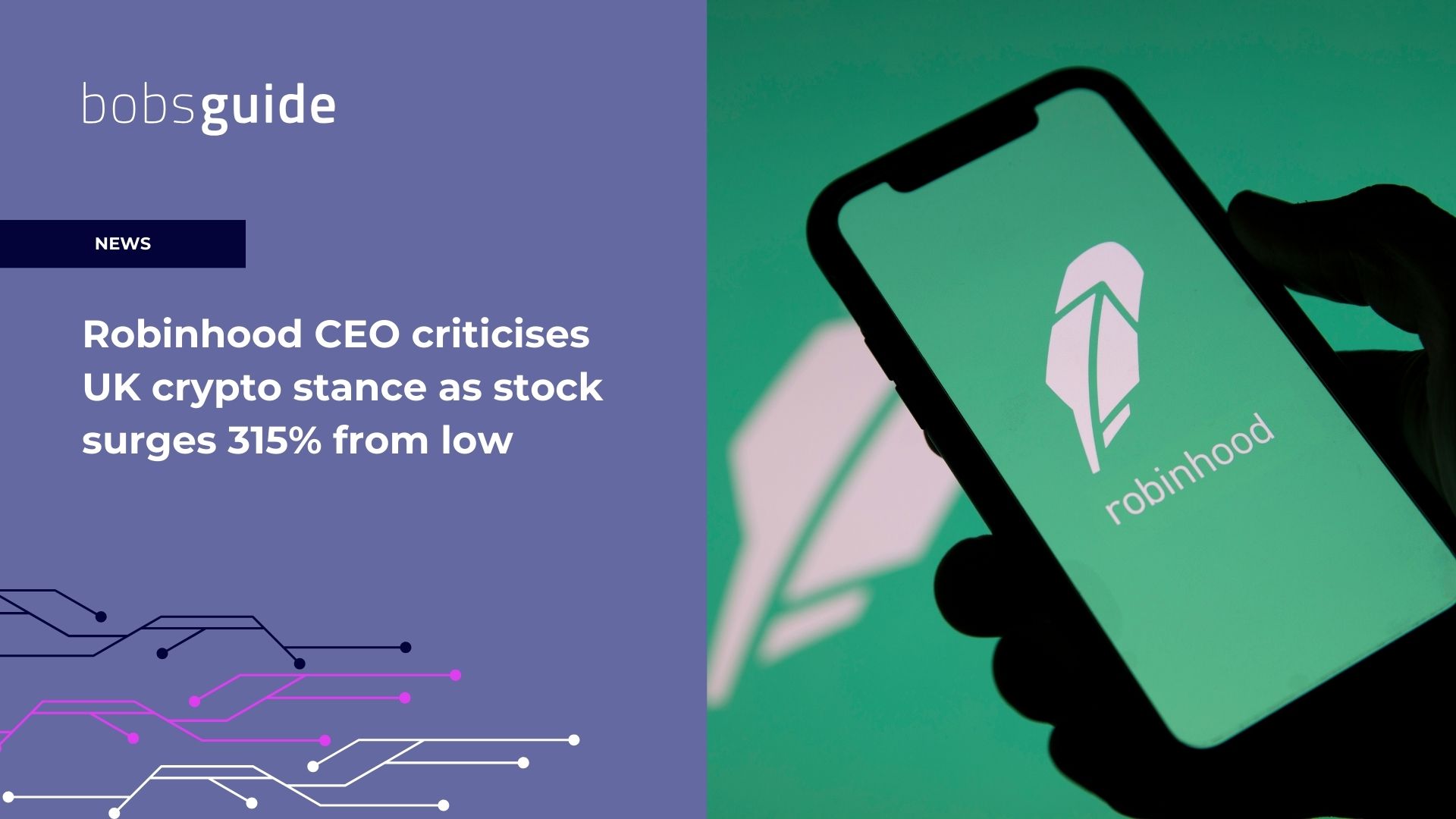Robinhood CEO criticises UK crypto stance as stock surges 315% from low
Robinhood’s chief executive challenges British crypto policy amid soaring stock performance, while the fintech platform faces user decline and potential interest rate headwinds in its UK expansion.
-
Marina Mouka
- November 18, 2024
- 3 minutes

Robinhood’s chief executive Vlad Tenev has branded British policymakers’ approach to cryptocurrency trading as “backwards” amidst the investment platform’s significant market recovery and UK expansion efforts.
The outspoken stance from the billionaire co-founder comes as Robinhood’s stock demonstrates remarkable resilience, surging 315% from its 52-week low of $7.91, though analysts warn of potential headwinds ahead.
UK expansion and regulatory tensions
Tenev, who launched the trading platform in the US in 2013, took aim at what he perceives as inconsistencies in UK regulatory attitudes towards trading and gambling. “I think people should be allowed to do what they want,” Tenev told The Sunday Times, highlighting the contrast between Britain’s regulated gambling sector and its cautious approach to crypto trading.
“It’s just strange to me that the gambling will continue, but suddenly, with crypto and margin trading, we would have a problem with that. That just seems backwards to me,” he added, noting his surprise at the prevalence of gambling in the UK compared to the United States.
The comments come amid growing concern from British healthcare leaders about crypto trading addiction. NHS England’s chief executive Amanda Pritchard has specifically warned about increasing pressure on the health service’s gambling clinics from unregulated crypto markets.
Despite regulatory hurdles that initially delayed its plans, Robinhood successfully launched margin trading in the UK in October, six months after its British market debut. The company has adjusted its approach, now offering more competitive rates ranging from 6.25% for loans under $50,000 to 5.2% for amounts exceeding $50m.
Financial performance and market challenges
However, while Robinhood’s stock performance has impressed investors, analysts point to underlying challenges. The platform’s monthly active users have declined to 11 million in Q3 2024, marking a 48% drop from its 2021 peak of 21.3 million users. Transaction revenue has also failed to recover to the heights seen during the 2021 meme stock frenzy, when it reached $451 million in Q2 2021, compared to $319 million in Q3 2024.
The company faces additional headwinds from changing interest rate environments. Despite currently holding $4.8 billion in cash and managing $4.4 billion in client funds, recent Federal Reserve rate cuts could impact Robinhood’s significant interest income, which reached $285 million in Q2 2024.
Future outlook and market position
Nevertheless, Tenev remains optimistic about the company’s UK prospects. “It’s pretty clear that [British] customers love the product, and they’re looking to bring all of their financial activities to Robinhood,” he said. “We have the potential to really be people’s financial home in the UK market.”
The platform’s expansion comes as UK authorities maintain their cautious stance on crypto assets, with the Financial Conduct Authority consistently warning investors about the risks of total losses in digital asset investments. The Treasury Committee’s recommendation to regulate crypto trading as gambling was rejected by the government last year, citing concerns about international regulatory alignment and risk mitigation.
With Robinhood’s price-to-sales ratio reaching 12.1 – its highest level in two years and 59% above its long-term average – market observers suggest the recent stock rally might face challenges sustaining its momentum, particularly if revenue growth fails to match the elevated valuation metrics.
The confluence of regulatory scrutiny, market dynamics, and operational metrics presents a complex picture for Robinhood as it seeks to establish itself as a major player in the UK financial services landscape while navigating volatile market conditions and evolving regulatory frameworks.


 Bobsguide is a
Bobsguide is a